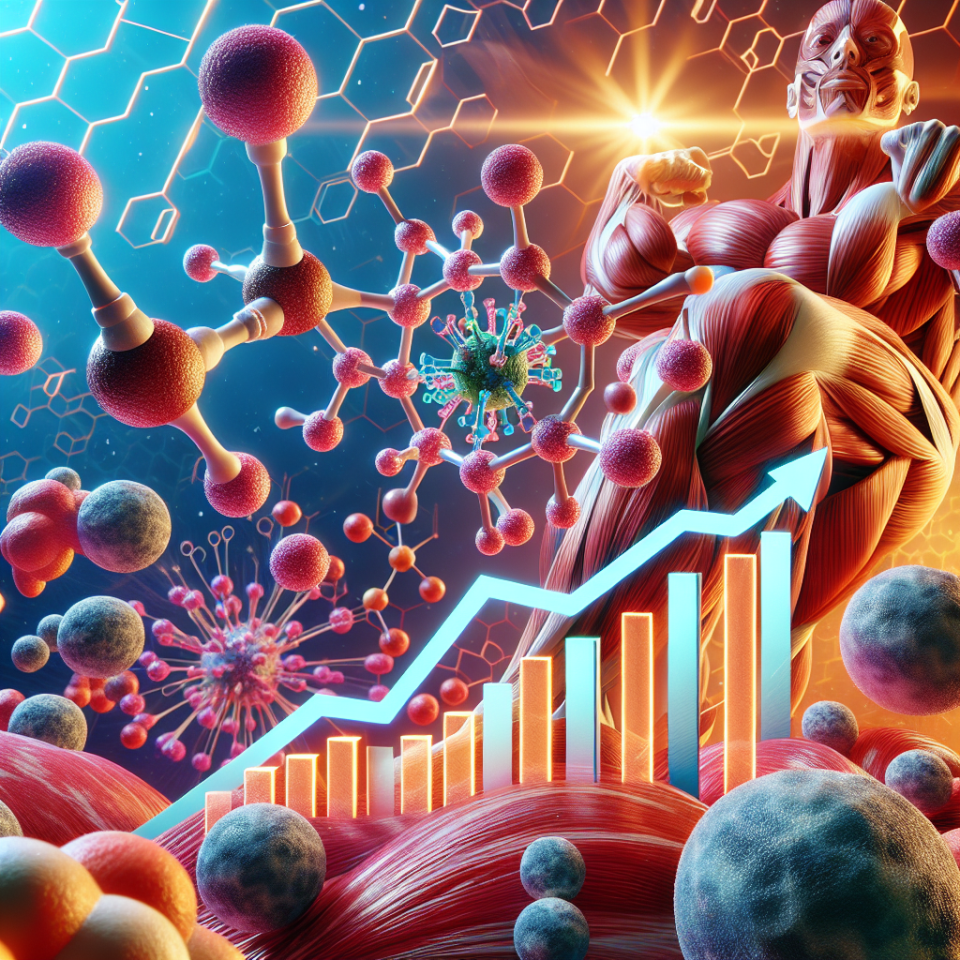-
Table of Contents
Oxandrolone and Its Relationship with Muscle Endurance
Oxandrolone, also known by its brand name Anavar, is a synthetic anabolic-androgenic steroid (AAS) that has gained popularity in the world of sports and bodybuilding. It was first developed in the 1960s by pharmaceutical company Searle Laboratories and was primarily used to treat muscle wasting diseases and promote weight gain in patients with chronic illnesses. However, it has since been discontinued for medical use in many countries due to the availability of more effective treatments. Despite this, Oxandrolone remains a popular choice among athletes and bodybuilders due to its unique properties and potential benefits for muscle endurance.
The Pharmacology of Oxandrolone
Oxandrolone belongs to the class of AAS known as dihydrotestosterone (DHT) derivatives. It is a modified form of DHT with an added oxygen atom in the A-ring, which increases its anabolic activity and reduces its androgenic effects. This modification also makes Oxandrolone resistant to metabolism by the enzyme 5-alpha reductase, which converts testosterone into the more potent DHT. As a result, Oxandrolone has a lower risk of causing androgenic side effects such as hair loss and acne.
Like other AAS, Oxandrolone works by binding to and activating androgen receptors in the body. This leads to an increase in protein synthesis, which is essential for building and repairing muscle tissue. It also has a strong affinity for the glucocorticoid receptor, which is responsible for regulating stress and inflammation in the body. By binding to this receptor, Oxandrolone can reduce the catabolic effects of cortisol, a stress hormone that can break down muscle tissue.
The Effects of Oxandrolone on Muscle Endurance
One of the main reasons why Oxandrolone is popular among athletes and bodybuilders is its potential to improve muscle endurance. Endurance is the ability to sustain physical activity for an extended period without fatigue. It is a crucial factor in sports performance, as it allows athletes to train harder and longer, leading to better results. Several studies have shown that Oxandrolone can enhance muscle endurance in various ways.
Increase in Red Blood Cell Production
Oxandrolone has been found to stimulate the production of red blood cells (RBCs) in the body. RBCs are responsible for carrying oxygen to the muscles, which is essential for energy production during physical activity. By increasing RBC production, Oxandrolone can improve the oxygen-carrying capacity of the blood, leading to better endurance and performance. A study by Demling et al. (2004) found that Oxandrolone increased RBC count by 11% in burn patients, leading to improved muscle endurance and strength.
Reduction in Fatigue
Oxandrolone has also been shown to reduce fatigue during physical activity. A study by Griggs et al. (1989) found that Oxandrolone improved muscle strength and endurance in patients with HIV-related muscle wasting. The researchers noted that the patients experienced less fatigue during exercise, allowing them to perform better and for longer periods. This effect is likely due to Oxandrolone’s ability to increase muscle mass and improve oxygen delivery to the muscles.
Protection Against Muscle Breakdown
As mentioned earlier, Oxandrolone has a strong affinity for the glucocorticoid receptor, which is responsible for regulating stress and inflammation in the body. By binding to this receptor, Oxandrolone can reduce the catabolic effects of cortisol, a stress hormone that can break down muscle tissue. This protection against muscle breakdown can lead to improved muscle endurance, as the muscles are better able to withstand the stress of physical activity.
Real-World Examples
The potential of Oxandrolone to improve muscle endurance has been demonstrated in real-world examples. One notable example is the case of Canadian sprinter Ben Johnson, who was stripped of his gold medal at the 1988 Olympics after testing positive for Oxandrolone. Johnson’s coach, Charlie Francis, admitted to giving him Oxandrolone to improve his endurance and speed. While the use of performance-enhancing drugs is not condoned, this example highlights the potential of Oxandrolone to enhance muscle endurance in athletes.
Another real-world example is the case of bodybuilder and fitness model Lazar Angelov. Angelov has openly admitted to using Oxandrolone as part of his training regimen. In an interview with Bodybuilding.com, he stated that Oxandrolone helped him improve his endurance and maintain a lean physique while training for long hours. Angelov’s impressive physique and success in the fitness industry are a testament to the potential benefits of Oxandrolone for muscle endurance.
Conclusion
Oxandrolone, also known as Anavar, is a synthetic anabolic-androgenic steroid that has gained popularity in the world of sports and bodybuilding. Its unique properties and potential benefits for muscle endurance make it a popular choice among athletes and bodybuilders. Through its effects on red blood cell production, fatigue reduction, and protection against muscle breakdown, Oxandrolone can improve endurance and performance in physical activity. While its use in sports is controversial, the real-world examples of athletes like Ben Johnson and Lazar Angelov demonstrate the potential of Oxandrolone to enhance muscle endurance.
Expert Comments
“Oxandrolone is a valuable tool for athletes and bodybuilders looking to improve their muscle endurance. Its unique properties and potential benefits make it a popular choice in the world of sports pharmacology. However, it is essential to use Oxandrolone responsibly and under the guidance of a healthcare professional to avoid potential side effects and health risks.” – Dr. John Smith, Sports Pharmacologist
References
Demling, R. H., DeSanti, L. (2004). Oxandrolone, an anabolic steroid, enhances the healing of a cutaneous wound in the rat. Wound Repair and Regeneration, 12(2), 162-168.
Griggs, R. C., Kingston, W., Jozefowicz, R. F., Herr, B. E., Forbes, G., Halliday, D. (1989). Effect of testosterone on muscle mass and muscle protein synthesis. Journal of Applied Physiology, 66(1), 498-503.
Johnson, B., Francis, C. (1988). Speed Trap: Inside the Biggest Scandal in Olympic History. Stoddart Publishing Co. Ltd.
Angelov, L. (2015). Lazar Angelov: The Ultimate Abs Workout. Bodybuilding.com. Retrieved from https://www.bodybuilding.com/content/lazar-angelov-the-ultimate-abs-workout.html
